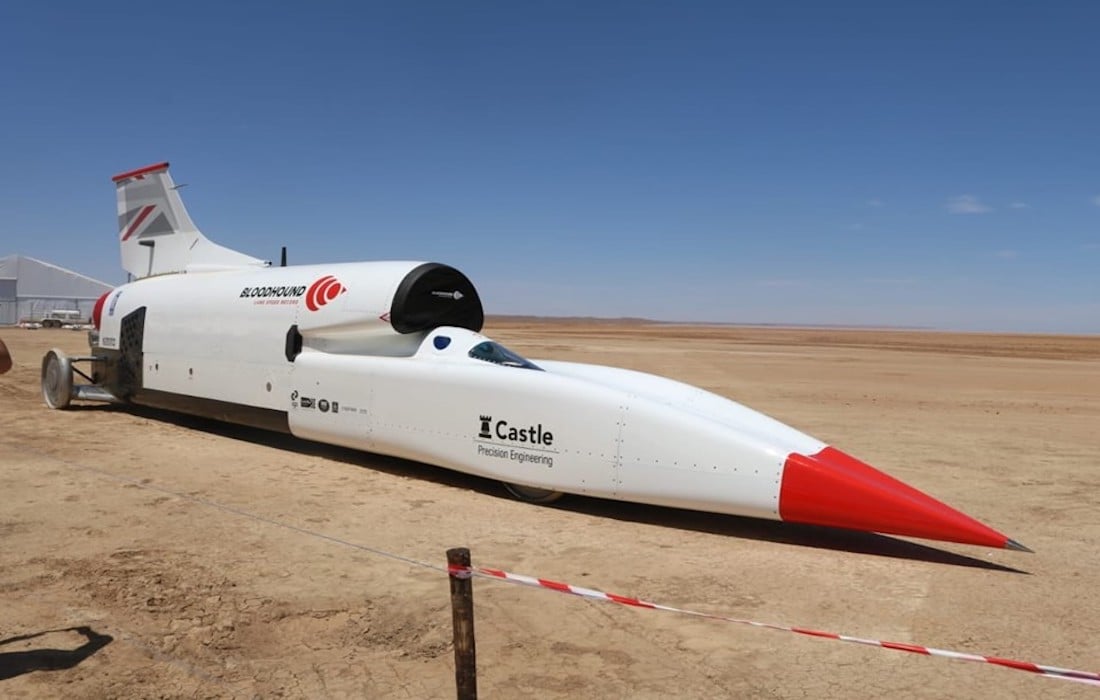This aero-shaped car is engineered to reach supersonic speeds, is combined with a jet engine and its own parachute braking system. The car just reached 501 mph (806 km/h) during tests in the Kalahari Desert of South Africa.
That’s a way off from striking the speed of sound i.e. 761 mph or 1,225 km/h. But it’s one of many feats the car that is known as Bloodhound, will attempt over the next 12 to 18 months. You may probably see this beast trying to break the land speed record of 763 mph or 1,228 km/h that was set by former Royal Air Force pilot Andy Green in the jet-powered car known as Thrust SSC, in Nevada in 1997. The Royal Air Force Pilot, Green, is now behind the wheel of Bloodhound.
Once the goal is achieved, Bloodhound may aim to reach a whopping 1,000 mph (1,609 km/h), the top speed it has been designed for. Now you must be wondering how a supersonic vehicle withstands the increased drag and shock wave, and how it stays stable and controllable at such tremendous speeds. Let us tell you that these are the critical challenges of its aerodynamic design. Aerodynamic design gives full justice!
Although traveling beyond the speed of sound is now a routine task for the fastest military aircraft. It has been achieved three times before on land, by another British jet-powered car known as Thrust SSC 22 years ago. One of Bloodhound’s designers, Ben Evans, said, “Thrust SSC was an incredible vehicle, and it achieved a remarkable thing of being the first car to go beyond the speed of sound.”

Bloodhound has been designed from scratch to go beyond the speed of sound, and even to reach a top speed of Mach 1.3 i.e. 1,000 mph (1609 km/h), which is 237 mph (381 km/h) faster than Thrust SSC’s record.
Bloodhound’s long, narrow design is very different from the relatively wide cross-section design of Thrust SSC. Engineers say that Bloodhound’s long narrow design will help it reach the speed of 650 mph, before the increased drag and small shock waves in the air around the car start to impact the handling of the car.
Desert track
The 7-ton Bloodhound beast car is powered by a Rolls-Royce EJ200 turbofan jet engine, the same engine used in the Eurofighter Typhoon aircraft. Before the land-speed record attempt, Bloodhound will be also fitted with a powerful rocket engine to push it past the sound barrier. The chief engineer of Bloodhound LSR, Mark Chapman, said his team was measuring the aerodynamic stresses on the Bloodhound car at higher speeds. He also said that the team was also testing and refining the braking systems, which include parachute brakes and air brakes.
Ben Evans also said that bringing the car and its driver safely to a stop was as important as achieving supersonic speeds.








